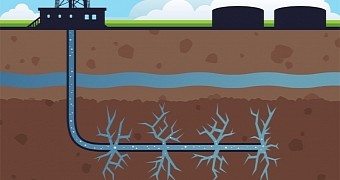Researchers with the Seismological Society of America say that, according to evidence at hand, it was fracking activities that caused the magnitude 3.0 earthquake that struck Ohio's Poland Township in March 2014.
What's more, the specialists add that, having looked at data obtained with the help of a network of seismic stations known as the Earthscope Transportable Array, they found that, over the course of just a few days, several dozen earthquakes occurred in this part of the US.
Admittedly, the magnitude 3.0 earthquake that occurred on March 10 was the only one that people living in the Poland Township area actually felt. Still, this does not change the fact that, as it turns out, hydraulic fracturing activities are transforming the region.
Just how many earthquakes are we talking about?
In a report detailing their finding, the Seismological Society of America researchers behind this investigation explain that, according to Earthscope Transportable Array data, a total of 77 earthquakes occurred in Ohio's Poland Township area between March 4 and 12, 2014.
These earthquakes ranged in magnitude from 1.0 to 3.0, and as already mentioned, the one that occurred on March 10 was the only one that the general population felt. What's interesting is that, of these shakes, 5 occurred within 1 kilometer (0.6 miles) of oil and gas wells.
Besides, it is understood that, at the time the earthquakes occurred, the wells were up and running. Following the magnitude 3.0 shake on March 10, authorities stepped in and ordered oil and gas company Hilcorp Energy to halt operations in the area.
Specialists with the Seismological Society of America believe that hydraulic fracturing activities in Ohio's Poland Township ended up triggering this series of earthquakes not by causing new faults in the ground but by activating an already existing one.
“These earthquakes near Poland Township occurred in the Precambrian basement, a very old layer of rock where there are likely to be many pre-existing faults,” study co-author Robert Skoumal explained in an interview with the press.
“This activity did not create a new fault, rather it activated one that we didn't know about prior to the seismic activity,” the Miami University in Ohio researcher went on to detail the outcome of his and his colleagues' investigation.
What's the deal with fracking anyway?
For those unaware, fracking, otherwise known as hydraulic fracturing, is a means to extract gas or oil from the ground by injected high-pressure water mixed with all sorts of chemicals deep inside it. The water serves to release the oil and the gas trapped in underground rocks.
Several investigations have shown that fracking activities can cause earthquakes. Still, it is said that, more often than not, these earthquakes are simply too small for people to feel them. The thing is that, as shown by specialist Robert Skoumal and his colleagues, shakes caused by fracking can sometimes be quite impressive.
In light of these findings, the researchers recommend that, before oil and gas companies are given permission to begin exploiting one area or another, efforts be made to zoom in on existing faults in the ground that are likely to trigger powerful shakes if toyed with.

 14 DAY TRIAL //
14 DAY TRIAL //